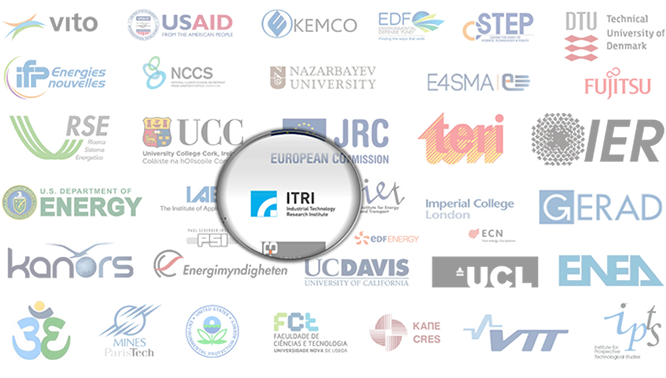- 中文版
- English
Introduction
Taiwan TIMES Model
The Industrial Technology Research Institute (ITRI) developed “Taiwan TIMES Model” under the support of the Bureau of Energy, Ministry of Economic Affairs. This Model have been applied to simulate potential energy scenarios during National Energy Conferences, taking consideration of the energy policy objectives and environmental limitations in Taiwan as research evidence to back up policy planning and conference discussion.
The International Energy Agency (IEA) established an Energy Technology Systems Analysis Program (ETSAP) collaborated by multiple countries in 1976 in response to the first energy crisis. The main purpose of the program aimed to build up the capacity of energy system analysis among member states. Over a period of almost two decades, the ETSAP developed a MARKAL model (MARKetALlocation) with success. 1
Green Energy & Environment Research Labs (GER), Industrial Technology Research Institute (ITRI)” was commissioned by the Bureau of Energy, Ministry of Economic Affairs (former Energy Council)” to conduct “A Study of Energy Strategy Curbing Carbon Dioxide Emissions” between July 1993 and June 1995, with the development of the national energy engineering model- “Taiwan MARKAL Model” and coupled energy economic model- “Taiwan MARKAL-MACRO Model.” After the establishment of Taiwan MARKAL Model, the model has been applied to explaining the possible pathway of energy supply, energy demand and fture trends of carbon dioxide emissions in Taiwan, which serves as the basic information of the energy issue for the authorities and the stakeholders. The model team have devoted to give insights about energy policy, including National Energy Conference, Nuclear-Free Homeland, etc.

TISMO (Taiwan Integrated Sustainability MOdel) is an integrated energy- economic-environmental framework, including Taiwan TIMES, TISMO-ENV and TISMO-CGE modules. TISMO-ENV module describes environmental impact from fossil fuel power plants on a regional basis. TISMO-CGE module presents the macroeconomic flows and market interactions using a computable general equilibrium model framework.
As time goes by, the MARKAL model in the rigid framework has difficulties to support the need of more and more complex energy issue in the real world. Hence the ESTAP developed a more flexible model generator, the TIMES model, during 1996-1998 and completed the calibration and application of this model during 1999-2001. TIMES model is the abbreviation for The Integrated MARKAL-EFOM System while such a model is the integration of the two models, MARKAL (MARKetALlocation) and EFOM (Energy Flow Optimization Model). In particular, EFOM is also an energy engineering model mainly adopted in Europe.

Source: IEA-ETSAP
Note:IEA-ETSAP tool users are more than 60 countries, about 234 institutes.
TIMES retains the advantages of MARKAL engineering model and improves flexibility of time period setting, instead of a five-year interval of simulation period in MARKAL model, which not only conforms to the short-term demand for energy strategy analysis but also increases a variety of functions (e.g., time-slice function). In view of practical need, currently the TIMES framework is widely adopted by MARKAL users. In order to enhance the capacity of short-term energy policy analysis of Taiwan’s energy engineering model and upgrade the context of Taiwan’s energy supply and demand outlook, the ITRI decided to model a TIMES framework under the support of Bureau of Energy, Ministry of Economic Affairs. Based on the modeling experience of Taiwan MARKAL Model, ITRI successfully established “Taiwan TIMES Model” in 2010, which was then officially adopted as the evaluation tool for energy policy in 2012.

NEC: National Energy Conference; NSDC: National Sustainable Development Conference; NAMAs: Nationally Appropriate Mitigation Actions; EIA: Environmental Impact Assessment; INDCs: Intended Nationally Determined Contributions; EDP: Energy Development Policy; PRG: Periodic Regulatory Goals of the Greenhouse Gas Emissions
- See IEA-ETSAP website, https://iea-etsap.org/index.php/etsap-tools/model-generators/markal.